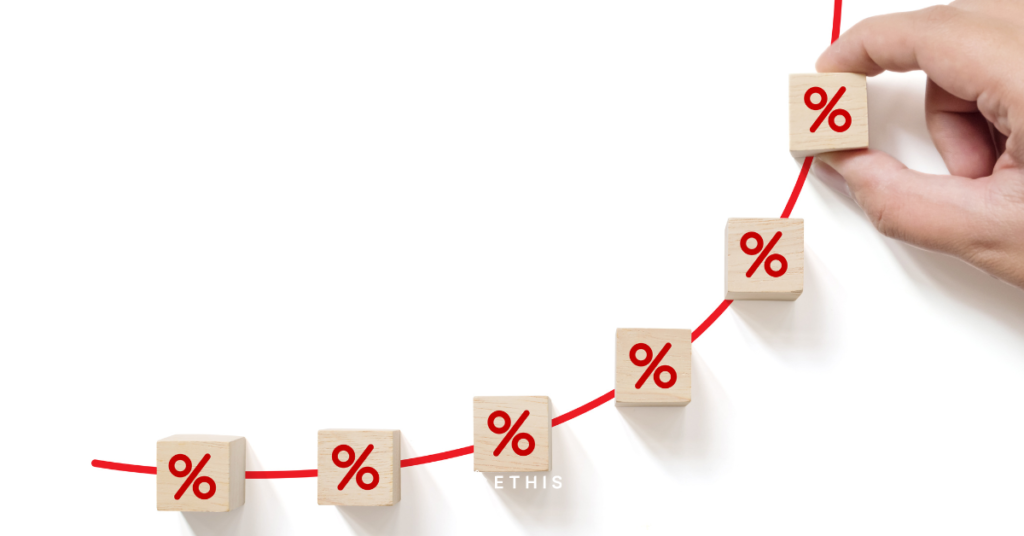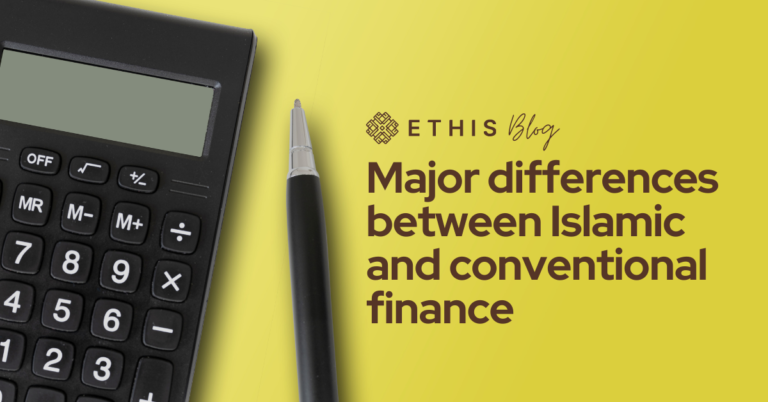
In any given country’s economic development, the banking sector is considered a crucial cornerstone to the health, wealth and happiness of its people. It is also tied to the stability of the financial climate within the country.
However, banking crises have become increasingly common and hazardous in recent years as a result of various flaws in the traditional banking system. The most recent financial disaster was caused by the subprime mortgage market. The bursting of a far larger super-bubble in the United States was triggered by the collapse of the housing bubble in the United States.
Market fundamentalism has reigned since the 1980s, resulting in deregulation, globalisation, and financial advances based on the false assumption that markets gravitate toward equilibrium. When Lehman Brothers declared bankruptcy in September 2008, the financial sector was thrown into chaos.
Islamic finance has risen to prominence as a potential option to help mitigate financial disasters as a result of the global financial crisis.
As the global economic recession worsens, many countries may seek alternatives, and Islamic finance can capitalise on these new chances by providing standardised Islamic financing solutions with fair norms and regulatory structures.
What are the major differences between the two financial systems? In many ways, both conventional and Islamic finance function quite similarly, excluding a few key aspects that should be understood.
Closer to home, Ethis Group operates on Islamic finance principles. Our product and our deep desire to create a more ethical form of finance to uplift humanity has attracted significant finance and community leaders to support our vision and mission. To learn more about what we do, click here.
Right, now let’s look at the origins of both options.
Related: 5 Major Benefits of Social Finance in Islam
Origins of Islamic finance and conventional finance


The Islamic banking sector has grown as a result of increased demand for Shariah-compliant goods from financiers in the Middle East and other Islamic countries, as well as from investors around the world, making it a global industry.
While contemporary Islamic banking began in 1963, the modern practice began in 1975, when banks were founded and compelled to function in accordance with Shariah norms and principles.
However, the creation of Islamic banking as a concept goes back far earlier than the 60s. Entrepreneurs in the Middle East have been conducting financial transactions since the early mediaeval period (1,000–1,500 AD). However, these transactions followed the same financial concepts as the Europeans at the time.
Because the Ottoman Empire’s Arabs dealt heavily with Spaniards, they established a number of no-interest financial systems based on profit and loss sharing. These systems, in turn, provided funding for trade and other commercial activities.
For local businesses, avoiding banks was no longer an option as economic pressures grew. As a result, interest-based local banks expanded in the area. Furthermore, as countries gained independence from colonial domination, the need for banks became even more urgent. Individuals, businesses, and governments all had to utilise these types of institutions, whether they liked it or not. Some experts advocated an interest-free banking option as a more appealing option.
Islamic funding was discussed at prestigious conferences such as the Finance Ministers of Islamic Countries and the First International Conference on Islamic Economics. As a result, interest-free banking moved from theory to practise, and an intergovernmental bank was established in 1975. The first privately held interest-free bank, the Dubai Islamic Bank, launched in the same year, with more banks following in nations including Sudan, Egypt, and Kuwait.
1975 was the year Islamic banking really took off, with an explosion of interest-free banks opening throughout the world with the majority of them being in Muslim countries.
Islamic banking has been one of the fastest expanding industries in the global banking industry since its inception. Industry projections suggest that Islamic banking assets owned by commercial banks around the world will continue to rise as new geographies open up to the practice. As of 2020, there are approximately 47 financial institutions worldwide with more than $10 billion in sharia-compliant assets, with 27 institutions reporting a pre-tax profit of more than $500 million in 2019.
Over the last decade, the rate of growth has accelerated substantially, owing to greater awareness and demand, as well as easier access to Islamic banking services.
The objective has been to establish a dual banking system, where Islamic banking coexists with conventional banking, across global markets, particularly in the GCC, the Middle East, and South Asia (which accounts for more than half of the overall Islamic banking business).
Islamic finance rejects the interest rate system


The majority of banks will tell you that there isn’t much of a distinction between Islamic and traditional banking. To some extent, this is correct.
Despite the fact that Islamic house financing has no interest rate, the instalments you pay after the mark-up will be nearly identical to the instalment of a conventional loan with an interest rate.
This is done in order to keep Islamic banking in Malaysia competitive. In fact, by the end of 2020, Bank Negara Malaysia (BNM) wanted this industry to account for 40% of Malaysia’s financial sector.
In Islam and Islamic finance, however, a fundamental rejection of the interest rate system is required. As a result, interest is replaced by a different financial component that is still relevant in today’s environment.
Riba is an Arabic word that means interest, which is the most important activity in the old banking system. Commercial rates of interest are considered by some Islamic banks to be something different than Riba, and there have been various disputes and attempts to resolve this issue.
As long as the sum is predictable, the return is fixed, the project is trade-related, and the bank has a legitimate stake in the outcome, some Islamic banks use interest rates as a benchmark for determining the needed profit return on specific services.



It becomes difficult, however, because Islamic bank activities must be founded on trade, contain actual trade, avoid prohibited practices, and be conducted with the highest level of integrity and good faith. Several other Islamic banks use Musharakah to legitimise bank interest.
A Musharakah is a contract in which one or more parties contribute to the financing and management of an Islamic business in exchange for a portion of the profits and losses from the beginning. It denotes that an Islamic bank operates on the basis of profit-and-loss sharing.
If the businessman loses money, the bank will compensate him based on the sort of financing he employed (Mudarabah, Musharakah). Interest is levied under the traditional banking system even if the organisation loses money as a result of using the bank’s funds, hence it is not profit-and-loss based.
Mitigation of risk
In this regard, a significant distinction between Islamic and conventional finance is how risk is handled and shared.
Islamic banks can employ some of the same techniques as traditional banks. They can study and monitor the businesses they fund to reduce the risk of default. In fact, profit and loss sharing may provide still another reason to keep an eye on the business.
Islamic banks, on the other hand, confront unique risk management concerns. Some instruments used by traditional banks are unavailable. Financial derivatives, for example, fall into this category.
The value of a financial derivative is determined by the value of another financial instrument. This immediately contradicts the materiality principle, which states that finance must be linked to real economic activity. Derivative markets that are Shariah-compliant have yet to emerge.
Reliance on profit and loss sharing


Bank financing and the issuance of Islamic securities are the two primary types of Islamic finance (called sukuk).
These are commonly referred to as debt – bank loans and bond offers, respectively – but this is misleading terminology. Those classifications do not apply to true Islamic financing.
Interest is forbidden in Islamic finance. When a business is financed by debt with an interest obligation, the risk is not shared equally.
Instead, Islamic finance requires cash to be distributed on a profit-and-loss basis. Finance can be delivered through a variety of transactions under sharia law. Each category describes how risk is shared between the company and its loan provider.
Social responsibility is built into Islamic finance


In terms of social responsibility, Islamic banks play a vital role. Furthermore, the essence and standards of Islamic economics naturally achieve fairness and equality, as evidenced by the annual Zakat payment made by Islamic banks to the poor via zakat channels as specified in the Holy Quran, which aids in poverty alleviation.
Zakat is a religious fee that is withheld from a bank’s net profits and paid once a year. Furthermore, by supporting the low-income category, microfinance programmes help to achieve some community balance.
The term “social responsibility” refers to all operations carried out by Islamic banks in order to fulfil their religious, economic, and ethical responsibilities.
In other words, in terms of religious obligation, Islamic banks are responsible and committed to the community to provide fully Shari’a-compliant banking and services, as well as to follow the principles of Islam in all transactions and operations.
In terms of economic responsibility, Islamic banks should run a successful and financially viable business while also reserving and developing shareholder and depositor funds.
The requirement of Islamic banks to follow and cherish the community’s religious and customary norms, which are not codified in laws, is referred to as ethical responsibility.
Fundamental differences in loan offerings


Although many Islamic bank products are comparable to those offered by conventional banks, such as deposits and equities, the two entities are fundamentally distinct and operate under separate economic models.
The main distinction is that traditional banks cannot operate without dealing in interest, which plays an important role in traditional banks and involves some level of speculation.
Islamic banks do not deal in interest-based transactions, and Islamic banking is built on four key principles: no usury, no speculating, no gambling, and ethical investing. For a fee, both sorts of institutions provide funding to productive channels. The distinction is in the funding agreement.
Traditional commercial banks provide loans with a fixed percentage interest rate as a return, collect deposits and pay depositors a fixed percentage of compounded interest, invest the money placed or provide loans, and so on.
Profit and loss sharing, trading, leasing, collecting fees for services, and other practises mandated by Islamic law are how Islamic banks make money.
They are allowed to receive profit on investments but not on loans.
Conventional banks offer fixed-reward loans, however Islamic banks are unable to do so since they cannot charge interest.
Clients are given three sorts of loans in traditional banking: short-term loans, overdrafts, and long-term loans.
Islamic banks are unable to provide loans other than interest-free loans (Qarz e Hasna), but they can conduct business by supplying the required asset to clients.
There is no agreement for the exchange of goods and services in the traditional banking system when disbursing cash finance, running finance, or working capital finance. While disbursing payments under Mudarabah or Salam contracts, the Islamic banking system requires the execution of agreements for the exchange of commodities and services.
All in all – similar but different
When it comes to major differences, there are not many between Islamic and non-Islamic finance. However, the few prominent differentiating aspects are intrinsically vital to the way both systems function (in relation to interest, risk, and intention). With that, we can develop a better idea of how to tell both systems apart.





Top Posts
Islamic P2P Crowdfunding Explained
How to Earn Halal Money? The Money Mindset
Halal Investments for Singapore Muslims? It’s time for a shake-up in the Islamic Investments scene.
Smart investment for making Halal money
3 Reasons Why Property Crowdfunding is the Smart Investment for You